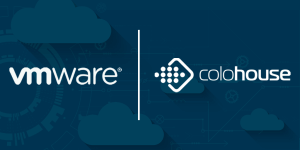When we discuss the benefits of cloud platforms with IT traditionalists, especially founders and C-suite executives in established companies with existing infrastructure. Frequently, the following questions arise: “We built our company without the cloud, so why do we need it now?”
It’s a great question, and one that’s not often addressed by cloud vendors. Imagine a CEO, running an established and successful company with an extensive on-premises infrastructure investment, faced with the potential disruption of cloud migration. Why would she move her company to a new infrastructure platform when, given the success of the company, the current strategy seems to be working just fine?
The traditionalist position makes assumptions that fundamentally misconstrue what the cloud is about. It views cloud platforms as an infrastructure alternative generally equivalent to legacy infrastructure. It’s a bunch of networked servers that run applications. We already have that, we’ve already for that, so what does the cloud offer that we can’t do already?
There are many answers to the question, but we’ll focus on three ways the cloud is inherently superior to on-premises or hosted bare metal infrastructure: utilization and scalability, and technology lifecycle costs.
Infrastructure Utilization and Scaling
If you’re a executive for a company with significant on-prem or hosted infrastructure, ask your CTO or IT department what the current and average utilization of your company’s servers looks like. The industry average is somewhere around 15%, occasionally higher, often lower. It’s a problem for every company that has invested in physical infrastructure — most end up over-investing, and the result is a miserable ROI and servers that sit three years in their racks, consuming power and maintenance man hours, and doing very little else.
Public cloud platforms are inherently elastic. It’s not that the utilization problem doesn’t exist for the physical hardware that supports virtual machines, it does — but it’s a problem for cloud vendors, not cloud users. As with other forms of outsourcing, companies that use the cloud pay for the privilege of not having to care.
Cloud users can deploy exactly the virtual infrastructure they need to meet current demand, scale up as required, and scale back easily — scaling back a physical hardware investment after the fact is impossible (unless you have a time machine).
The Lifecycle Conundrum
As soon as bare metal servers are bought and deployed, the clock starts ticking. They’ll have to be replaced within three to five years and maintained throughout that period. For every turn of the hardware lifecycle, the company has to make a substantial capital investment in a rapidly depreciating asset.
The benefits of cloud adoption should be clear here. The hardware lifecycle problem is outsourced to the cloud vendor, and infrastructure expenditure moves from a capital cost to an operating cost, with all the flexibility that implies.
Let’s be clear, you can run any applications on on-prem or hosted physical infrastructure that you can run in the cloud. But outsourcing to a cloud platform brings profound strategic and operational benefits.
Unless your company is a cloud vendor or infrastructure hosting provider, there’s little benefit to keeping the problems associated with procuring, managing, and maintaining infrastructure in-house — outsource them and gain all the advantages of enterprise-grade IT infrastructure with a fraction of the headaches.














